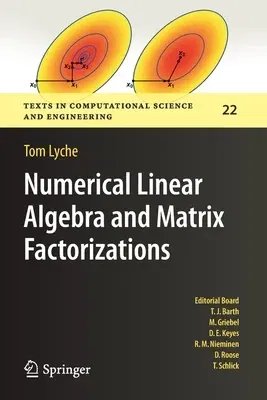Tom Lyche
(Author)Numerical Linear Algebra and Matrix Factorizations (2020)Paperback - 2020, 3 March 2021

Qty
1
Turbo
Ships in 2 - 3 days
In Stock
Free Delivery
Cash on Delivery
15 Days
Free Returns
Secure Checkout

Part of Series
Texts in Computational Science and Engineering
Print Length
371 pages
Language
English
Publisher
Springer
Date Published
3 Mar 2021
ISBN-10
3030364704
ISBN-13
9783030364700
Description
Product Details
Author:
Book Edition:
2020
Book Format:
Paperback
Country of Origin:
NL
Date Published:
3 March 2021
Dimensions:
23.39 x
15.6 x
2.06 cm
ISBN-10:
3030364704
ISBN-13:
9783030364700
Language:
English
Location:
Cham
Pages:
371
Publisher:
Weight:
553.38 gm